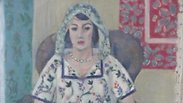
BERLIN - A German recluse whose billion-dollar art hoard was confiscated will return all works looted by the Nazis to their owners or their descendants, his legal custodian told media on Wednesday.
The paintings, drawings and sculptures were seized from Cornelius Gurlitt's two homes by authorities investigating possible tax evasion in February 2012. They include Modernist and Renaissance masterpieces valued at about 1 billion euros, according to media reports.
In February, Gurlitt's lawyers had said he had filed a formal complaint against the seizure of his art collection.
Related stories:
- Germany finds 1,500 masterpieces looted by Nazis
- Probe into Nazis and Jewish art exposes 'dealer to the Fuhrer'
- 60 more works found in German's 'Nazi art trove'
Germany has faced criticism from around the world for failing to publish immediately the full list of artworks, for keeping silent for nearly two years about the trove and for potentially having had no legal right to seize the pieces.
Gurlitt wants to "return all (artworks) that have been stolen or robbed from Jewish ownership to each of their owners or descendants," lawyer Christoph Edel was quoted as saying on Wednesday by Sueddeutsche Zeitung newspaper.
Authorities made Edel the provisional legal custodian for Gurlitt, who is in his 80s, after doctors ruled he was too sick to look after his own business interests.
The first piece to be returned would be a portrait entitled "Sitting Woman" by Henri Matisse, which belonged to Paris-based Jewish art collector Paul Rosenberg and was at some point part of Adolf Hitler's air force chief Hermann Goering's collection before making it to Gurlitt.
Further works were likely to be returned in the coming weeks, Sueddeutsche, Norddeutsche Rundfunk and Westdeutsche Rundfunk quoted Edel as saying.
Gurlitt inherited the collection from his father who took orders from Hitler to buy and sell so-called 'degenerate art' to fund Nazi activities during World War Two. The son aroused suspicion in 2010 when German customs officials stopped him on a train from Switzerland carrying a large sum in cash.
When authorities raided his Munich apartment in February 2012 on suspicion of tax evasion, they found the art collection.
The three news outlets also reported that the stash of paintings seized from Gurlitt's Salzburg home came to 238 pieces, many more than previously thought.
Under German rules, works acquired from 1933 up to the present day but created before 1945 can be investigated as Nazi-looted property.















